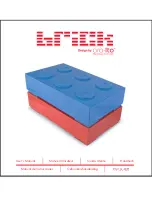
will not work to back up the previous versions of the
fi
le system. To answer this particular issue, shadow
copies are available for back up in two situations. If the backup software in question supports the use of
shadow copies and can communicate with underlying block device, it is supported, and the previous
version of the
fi
le system will be listed in the backup application as a complete
fi
le system snapshot. If the
built-in backup application NTbackup is used, the backup software forces a snapshot, and then uses
the snapshot as the means for back up. The user is unaware of this activity and it is not self-evident
although it does address the issue of open
fi
les.
Shadow Copy Transport
Shadow Copy Transport provides the ability to transport data on a Storage Area Network (SAN). With
a storage array and a VSS-aware hardware provider, it is possible to create a shadow copy on one
server and import it on another server. This process, essentially “virtual” transport, is accomplished in a
matter of minutes, regardless of the size of the data.
NOTE:
Shadow copy transport is supported only on Windows Server 2003 Enterprise Edition, Windows Storage
Server 2003 Enterprise Edition, and Windows Server 2003 Datacenter Edition. It is an advanced
solution that works only if it has a hardware provider on the storage array.
A shadow copy transport can be used for a number of purposes, including:
•
Tape backups
An alternative to traditional backup to tape processes is transport of shadow copies from the
production server onto a backup server, where they can then be backed up to tape. Like the
other two alternatives, this option removes backup traf
fi
c from the production server. While
some backup applications might be designed with the hardware provider software that enables
transport, others are not. The administrator should determine whether or not this functionality is
included in the backup application.
•
Data mining
The data in use by a particular production server is often useful to different groups or departments
within an organization. Rather than add additional traf
fi
c to the production server, a shadow copy
of the data can be made available through transport to another server. The shadow copy can
then be processed for different purposes, without any performance impact on the original server.
The transport process is accomplished through a series of DISKRAID command steps:
1.
Create a shadow copy of the source data on the source server (read-only).
2.
Mask off (hide) the shadow copy from the source server.
3.
Unmask the shadow copy to a target server.
4.
Optionally, clear the read-only
fl
ags on the shadow copy.
The data is now ready to use.
Folder and share management
The HP ProLiant Storage Server supports several
fi
le-sharing protocols, including DFS, NFS, FTP, HTTP,
and Microsoft SMB. This section discusses overview information as well as procedures for the setup
and management of the
fi
le shares for the supported protocols. Security at the
fi
le level and at the
share level is also discussed.
NOTE:
Detailed information on setting up and managing NFS and NCP shares is discussed in the “Other
network
fi
le and print services” chapter.
HP ProLiant DL380 G5 Storage Server
73
Содержание ProLiant DL380 G5 DPSS
Страница 24: ...24 The HP storage server solution ...
Страница 96: ...96 Print services ...
Страница 152: ...152 Network adapter teaming ...
Страница 164: ...164 Regulatory compliance and safety ...
















































